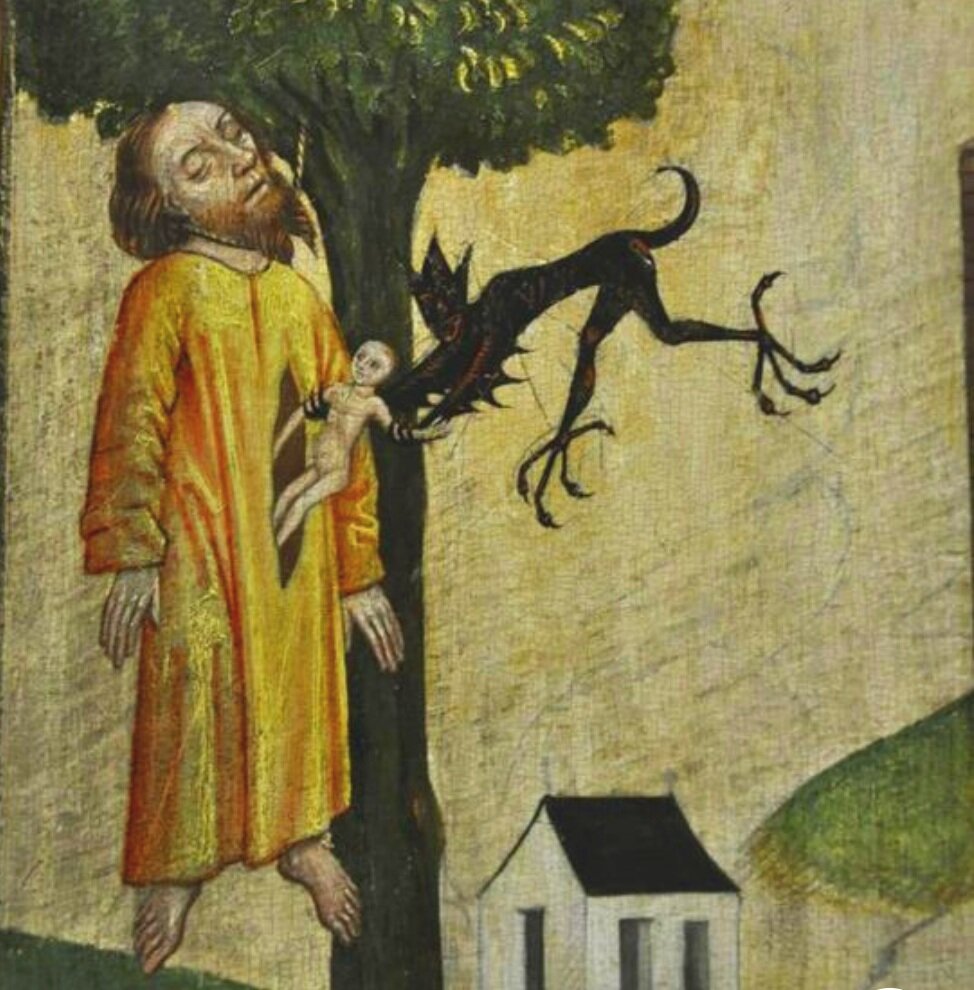Date of publication : 18.4.20
Today, Maundy Thursday, we celebrate the most famous kiss in the world. For it was on this very day, nearly two thousand years ago, that Judas Iscariot kissed Jesus Christ.
Christian folk remember this kiss every year, and have to have the next four days off, because the mere thought of it is simply overwhelming. And due to the recent global boom of interest in kissing by people of all faiths (partly, I like to think, thanks to my little course) it is estimated that the period of recovery will need to be extended indefinitely.
What makes this kiss so special? Let us look to a description from the gospel of St Matthew :
Lo, Judas, one of the twelve, came, saying, Whomsoever I shall kiss, that same is he: hold him fast. And forthwith he came to Jesus, and said, Hail, master; and kissed him. (Matthew 26:46-48)
So Matthew gives us some context, but still little detail on the kiss itself and what it was really like.
As you can see from the various images above, it is hard to pin down what it was really like. After all, it happened ages ago. But let’s think about this a bit more closely and see if we can work it out.
Let’s start with what it looked like. We know of course what Jesus looked like, but what did Judas look like? Medieval European painters agreed that Judas could be identified by his red hair and, though it cannot be 100% confirmed, it seems likely that Judas’ hair was indeed red, because loads of medieval paintings depict Judas with red hair (see above). St Jerome himself had warned, as far back as the fifth Century, that red hair was ‘presage for the Fires of Hell' and it was commonly understood that vampires and witches had red hair, due to the large amount of blood they drank and menstruated (see the 1486 guide to hitting witches - Malleus Maleficarum). It made sense that witches might be the brethren of Judas. So it made sense that Judas ‘The Carrot’ had red hair.
And Jews had red hair.
Actually, confusingly for the Medieval European authorities, not all Jews had red hair, so it was, in practice, hard to spot them, which led to the Fourth Lateran Council (1215), convened by the inappropriately named Pope Innocent III, passing a decree requiring all Jews to wear a distinguishing piece of clothing : a yellow badge, say, or a pointy hat. But it was understood that Jews still often had red hair - exemplified by the ‘Roten Juden’ (meaning ‘Red Jews’) who famously brought the Black Death to Europe in 1347, through the sheer power of mythology. Now, because the ‘Red Jews’ did not, strictly speaking, exist, Christian thinkers had to spend ages and ages trying to work out what or who they might be. Incredibly difficult work. Eventually, Luther’s friend, Phillip Melanchthon (1497-1560), suggested that maybe Muslims were the Red Jews, but he never managed to prove it. Some Jewish people threw down their badges and their pointy hats in disgust at the stupid Christians but you can’t take hair off unless you really try, and thank the Lord for that really because it made life easier for the Spanish Inquisition, who already had a lot on their plate, and so the soldiers of Spain rounded up all the red-headed people and they burnt them in the righteous fires of their acts of faith…
What lesson might we learn from this?
So many years later?
Well, maybe the most important thing to learn from this is that if we find ourselves giving someone a little kiss which should be a nice thing, but it feels suddenly like we might be the eye of the storm of a cataclysmic betrayal, we might be right.
Beware of false prophets, which come to you in sheep's clothing, but inwardly they are ravening wolves.
(Matthew 7:15)
This verse of Matthew’s gospel is, in fact, a dark riddle. For it turns out that the prophet was speaking of himself. He went on to write the worst bit of the good book:
Then answered all the people, and said, His blood be on us, and on our children.
(Matthew 27:25)
Here endeth the lesson.
EXERCISE LESSON TWO
Don’t copy this down.
Images
Love and Pain : Edvard Munch (1893)
Judas Kiss : Giotto
Judas Kisses
The Vampire : Munch (1893)
Illustration of Jewish Clothing requirements in Medieval / Renaissance periods
Woodcuts of witches
The Last Temptation of Christ : Martin Scorsese (1988)
Date of publication : 9.4.20 (Maundy Thursday)

















